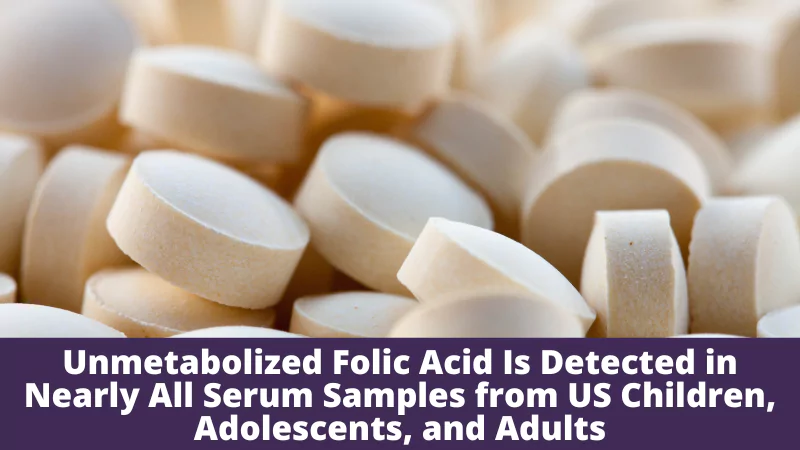Over the course of this year, there have been many articles about the benefits of folic acid vs L-5MTHF here in Australia and I think the writings have been somewhat one sided, so I have decided to send you my thoughts on the folic acid vs L-5MTHF debate. It is understandable that manufacturers would protect the use of folic acid, because unfortunately here in Australia we do not have TGA approval to use any of the methyl products. This still does not mean that folic acid is the best option, particularly for those with MTHFR mutations. Below summarises what we know so far in the research.
Methylenetetrahydrofolate reductase (MTHFR) affects the distribution of folate and maintains a delicate balance between folate for nucleotide synthesis and those for methionine synthesis.1 Mild MTHFR deficiency occurs because of homozygosity for a C to T substitution at bp677 which occupies about 10% of North American, European and Australian populations,2 and causes MTHFR reduction resulting in hyperhomocysteinemia, methylation reduction and non-methylated folate increase.


Traditional recommendation for MTHFR is folic acid supplement because it is thought that folic acid can help to correct folate deficiency. But recent research shows that folic acid may not be a suitable solution for MTHFR. Related finding and evidence are discussed as follows.
1. Folic Acid Inhibits DHFR Gene
It is reported that folic acid inhibits dihydrofolate reductase (DHFR) gene from various species,3,4 and the type of inhibition is reported as that folic acid inhibits DHFR in human KB (cervical adenocarcinoma) cell line as competitive when the concentration of 7,8-dihydrofolate (DHF) is high.5 But when concentration of 7,8-DHF is low, folic acid functions as a non-competitive inhibitor of human DHFR. Since mammalian DHFR is a monomer with one single folate binding site, it is suggested that the folic acid inhibition derives from two binding formats of the two folate, i.e., folic acid binding to DHFR / NADP and 7,8-DHF binding to DHFR / NADPH. In the case of high concentration of 7,8-DHF, both folates compete for the same binding site on DHFR. This report indicates that human body may have very limited ability to metabolize folic acid especially when it is in high doses.
These reports confirm that folic acid does bind to DHFR gene and thus is not a suitable supplement for MTHFR mutations because it will not be able to correct the folate deficiency. In addition, it will build up unmetabolised folic acid leading to immune dysfunction.
2. Unmetabolised Folic Acid Causes Immune Dysfunction and other issues
Folic acid, especially when over dose, is reported frequently forming unmetabolised folic acid that leads to immune dysfunction. In the U.S., all flour is fortified with 140 mcg / 100 g of folic acid to supply 100 mcg to daily diet. Since some researchers advocated that the dose should be increased 2-4 times higher, a research conducted reports that the doses of 100 – 200 mcg is unlikely to cause the appearance of unmetabolised folic acid in serum, but it is detected after supplementation period of 14 weeks of 400 mcg which obviously leads to unmetabolised folic acid appearance in serum.6
A report from the UK indicates that, with half of the amount being proposed for fortification, folic acid may cause problems, because it is metabolised in the liver and once the liver is saturated, it leads to significant amount of unmetabolised folic acid entering the blood stream.7 Unmetablised folic acid can be a problem, for example, for women receiving in vitro fertilisation who may have increasing possibility of conceiving multiple embryos; for patients with blocked arteries being treated with a stent; for patients being treated for malaria, arthritis, psoriasis, leukaemia and other cancer types because it may reduce the response to related anti-folate drugs.8 In addition, in Ireland, it is reported that unmetabolised folic acid is detected in cord blood from all infants at birth including full-term and premature infants, and in follow-up serum samples of 7 infants 4 days post formula feeding, in which 6 infants had increased from birth indicating that infants potentially have unmetabolised folic acid in their blood circulation before having mandatory fortification.9
Most importantly, unmetabolised folic acid may reduce immune function. A report shows that aged female mice fed with diet containing high folic acid have significantly lower number of natural killer (NK) cells in their spleens with decreased cytotoxicity immune function.10 Correspondingly, another report shows that exposing to food fortification and vitamin supplement in large populations in the US results in high folic acid intake, which causes reduced NK cell cytotoxicity in post-menopausal women who consumed folate rich diet together with folic acid supplements more than 400 mcg per day, but not in those with lower folate of less than 233 mcg per day.11 The consequence is stronger in women of or older than 60 years and in those with higher unmetabolised folic acid in serum.
3. Folic Acid Blocks Natural Folates and Causes Pseudo MTHFR
It is well known and widely used in experimental setting to use higher concentration of folic acid to competitively block the binding of folate to all folate receptor in mammalian cells including rodent and human cells.12 Even though there is no report of in vivo natural folate blocking of binding to folate receptor by higher doses of folic acid, it is a risk to be kept in mind for safety and efficacy when considering folic acid in the treatment of MTHFR mutations.
Interestingly, a study working on gene-nutrient interaction found that high folic acid consumption through diet leads to pseudo MTHFR deficiency when it was fed to mice for 6 months due to the fact that high folic acid in the diet reduces MTHFR protein and its activity levels.13 It results in hepatocyte degeneration because mutated hepatocytes lose their ability to accommodate lipid disturbance resulting in changes in phospholipid / lipid metabolism and altered membrane integrity. The researchers mentioned that this results may have clinical implications for people consuming higher dose of folic acid particularly populations with MTHFR deficiency.
4. Folic Acid Induces Higher Risk of Cancer
The first report can be tracked back to 1947 when a study administered folic acid to treat leukaemia children and found with surprise that it actually accelerated leukaemia progression.14 A recent big-scale clinical trial in the U.S. and Canada administrated 1 mg / day of folic acid as supplement to test its impact on recurrence of colorectal adenomas, and found no effect on recurrence when it was the first follow-up at year 3 in 987 patients; but at the second follow-up of year 3-5 in 607 patients, there was a 67% of increased risk of advanced lesion or invasive colorectal adenomas, > 2 folds of increased risk of having at least 3 colorectal adenomas, and increased risk of non-colorectal cancers mostly of prostate cancer.15
In addition, based on previous studies showing non-significant increased cancer risk in folic acid treated patients with ischemic heart disease, a clinical trial was conducted to show that lung cancer incidence and mortality was increased in 1703 patients with ischemic heart disease who received oral folic acid 0.8 mg / day plus vitamin B12 0.4 mg / day in Norway, where there was no folic acid fortification of foods. The report calls for safety monitoring of wide spread consumption of folic acid from supplements and fortified foods.16
The mechanism that over-dose folic acid induces higher risk of cancer is currently unknown, but some molecular epidemiologic studies show that genetic polymorphism in folate metabolic processes, such as MTHFR, directly modify cancer risk, or indirectly modify cancer risk through interaction with folate and other nutritious components in folate metabolism.17,18,19 This emphasizes the consideration of use of folic acid in MTHFR mutations because MTHFR deficiency may amplify cancer risk.
5. 5-MTHF Is More Effective than Folic Acid
Multiple clinical trials conducted to show that 5-MTHF is more effective in their in vivo functions compared to folic acid. A trial of 167 healthy volunteers shows that low dose (113 microgram) of 5-MTHF is at least as good as folic acid (100 microgram) in generating plasma folate, mean RCF, and is more effective in lowering tHcy at week 24.20 In a similar study conducted in 144 female participants, there is no difference between 5-MTHF and folic acid in reducing tHcy concentration indicating that 5-MTHF is an adequate alternative to folic acid.21
To test the differences of treatment effect of 5-MTHF and folic acid on MTHFR, healthy females with homozygous and wild-type MTHFR mutation received one single dose of 5-MTHF (416 microgram) or folic acid (400 microgram), and plasma folate indexes were measured 8 hours after supplementation. Results show that 5-MTHF induces significantly higher plasma folate concentration vs. time and maximum concentration, and shorter time-to-reach maximum compared to folic acid in both genotypes. Furthermore, unmetabolised folic acid in plasma appears regularly after folic acid supplementation but rarely after 5-MTHF supplementation. The report suggests that 5-MTHF increases plasma folate more effectively than folic acid irrespective of mutations of MTHFR.22
As historically used, folic acid is the reference folate in clinical trial studies to assess relative bio-availability of dietary folate. A study was performed in 163 healthy adults under folate rich food diet for 16 weeks to compare the reference roles of 5-MTHF and folic acid in assessing plasma and erythrocyte folate concentrations. Results show that 5-MTHF is the same or better than folic acid as the reference folate, and the report suggests that folic acid should not be used as the reference folate in longer term human intervention studies.23
Summary
The use of folic acid in general populations without MTHFR or DHFR mutation is most likely of limited concern; but even for them, it is considered safe only when the dose is 100 – 200 mcg. For those people having fortified flour or cereal, energy drinks, protein bars and supplement, the dose of folic acid is exceeding the limit easily and considerably.
Beside efficacy differences, when comparing folic acid and 5-MTHF, folic acid is a synthetic compound with no biological function until reduced to its subsequence formats, unmetabolised folic acid starts appearing at dose > 200 mcg, and individuals show wide variations in folic acid reduction ability in vivo.24 On the other hand, 5-MTHF is a better alternative especially in those countries without folic acid fortification of foods, because it is a natural form of folate readily available in vivo for transport and metabolism, and it has no upper intake limit.
5-MTHF has its important advantages compared to synthetic folic acid. Firstly, it is well absorbed even when gastrointestinal pH changes, secondly it is bioavailable and is not affected by metabolic defects.25 The use of 5-MTHF to replace folic acid in treating MTHFR reduces potential of masking haematological symptoms of vitamin B12 deficiency, reduces interactions with medications inhibiting dihydrofolate reductase, prevents formation of unmetabolised folic acid in blood circulation, and overcomes metabolic defects caused by MTHFR polymorphism. Current situation of 5-MTHF marketing and approval is that the U.S. FDA and European Food Standard Agency approved products containing 5-MTHF,26 and thus its replacement of folic acid in treating MTHFR and other disorders is expected.








